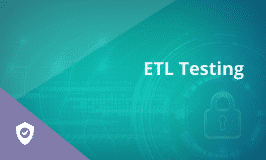Manual Testing for Beginners to Advanced
Become a Certified Manual Tester with this Course!
- Manually verifying the functionality of a software application without using automation tools.
- Identify bugs, usability issues, and inconsistencies. Goal: Ensure the software behaves as expected from an end-user perspective.

Key Highlights
50+ Live interactive sessions across 7 months
218 Hrs Self-paced Videos
50+ Industry relevant Projects & Quizzes
Live Classes from IIT Faculty & Industry Experts
Certification from iHub IIT Roorkee & Microsoft
Career Services by Intellipaat
2 Days Campus Immersion at iHub IIT Roorkee
24/7 Support



Process Advisors
About Manual Testing Course Overview
This course covers the fundamentals of manual testing, including test planning, execution, and defect management. You’ll learn various testing techniques (BVA, EP, exploratory), create and execute test cases, and report bugs using industry tools. The program includes hands-on projects, real-world scenarios, and certification, equipping you with job-ready skills for software testing roles.
Talk To Us
We are happy to help you 24/7

+91-7022374614
13+ Skills Covered
Java
Selenium
WebDriver
Automation
Web Alerts
Selenium Testing Course Fees
Online Classroom
Preferred
Weekend (Sat-Sun)
![]() 23 Mar 2025
23 Mar 2025
![]() 08:00 PM – 11:00 PM
08:00 PM – 11:00 PM
Weekday (Tue-Fri)
![]() 25 Mar 2025
25 Mar 2025
![]() 07:00 PM – 9:00 PM
07:00 PM – 9:00 PM
Weekend (Sat-Sun)
![]() 29 Mar 2025
29 Mar 2025
![]() 08:00 PM – 11:00 PM
08:00 PM – 11:00 PM
Weekday (Tue-Fri)
![]() 1 Apr 2025
1 Apr 2025
![]() 07:00 PM – 9:00 PM
07:00 PM – 9:00 PM
₹23,028
Corporate Training
- Customized Learning
- Enterprise Grade Learning Management System (LMS)
- 24x7 Support
- Enterprise Grade Reporting
Manual Testing Certification Course
Syllabus
Module 01 - Introduction to Software Testing
- What is Software Testing?
- Importance of Software Testing
- Types of Testing: Manual vs. Automation
- Levels of Testing: Unit, Integration, System, Acceptance
- Testing Life Cycle (STLC)
- Software Development Life Cycle (SDLC)
- Roles in Software Testing (QA, Testers, Developers)
- Hands-on – Introduction to different SDLC models (Waterfall, Agile, V-Model, etc.)
Module 02 - Testing Types and Techniques
- Black Box Testing
- White Box Testing
- Grey Box Testing
- Functional Testing vs. Non-functional Testing
- Test Design Techniques: Equivalence Partitioning, Boundary Value Analysis, Decision Table Testing, State Transition Testing
- Hands-on – Designing test cases using different techniques
Module 03 - Test Case Design and Management
- What is a Test Case? Writing Effective Test Cases
- Test Case Format and Components
- Test Case Execution and Reporting
- Test Plan Creation : What is a Test Plan? Components of Test Plan
- Test Data Creation and Management
- Test Case Management Tools (e.g., TestRail, Jira, Quality Center)
- Hands-on – Create and execute test cases for a given scenario using tools like Jira or Excel
Module 04 - Functional Testing
- Understanding Functional Requirements
- Functional Test Execution: How to perform Functional Testing
- Smoke Testing, Sanity Testing, and Regression Testing
- User Acceptance Testing (UAT)
- Exploratory Testing vs. Scripted Testing
- Hands-on – Perform Functional Testing on a web or mobile application
Module 05 - Test Case Design and Management
- Non-Functional Testing
- What is Non-Functional Testing?
- Performance Testing (Basics, Load Testing, Stress Testing)
- Usability Testing
- Compatibility Testing (Cross-browser, Cross-platform)
- Security Testing (Basic concepts)
- Hands-on – Conduct basic performance testing using tools like JMeter or LoadRunner
Module 06 - Bug Life Cycle & Reporting
- What is a Bug/Defect?
- Bug Life Cycle: Identification, Reporting, and Resolution
- Bug Reporting Tools: Jira, Bugzilla, Mantis
- Writing a Clear and Effective Bug Report
- Prioritization & Severity Levels (Critical, Major, Minor)
- Retesting and Regression Testing
- Hands-on – Report a defect in a bug tracking tool and perform bug verification
Module 07 - Test Execution & Reporting
- How to Execute Test Cases
- Reporting Test Results: Test Execution Status, Pass/Fail Criteria
- Test Coverage and Traceability Matrix
- Test Reporting & Metrics: What metrics to track, How to report
- Types of Reports: Summary Report, Defect Report, Test Execution Report
- Hands-on – Create a Test Execution Report based on test results
Module 08 - Introduction to Agile Testing
- What is Agile?
- Agile vs. Waterfall Testing
- Scrum Framework in Agile Testing
- Types of Testing in Agile (Sprint Testing, Continuous Testing, etc.)
- Role of a Tester in an Agile Team
- Continuous Integration/Continuous Testing concepts
- Hands-on – Simulate testing in an Agile environment (sprint planning, sprint execution)
Module 09 - Real-World Testing Scenarios
- Applying learned concepts to a real-world application
- End-to-end testing process
- Handling complex scenarios in testing
- Risk-based Testing
- Collaboration with Developers, Product Owners, and other stakeholders
- Hands-on – Conduct end-to-end manual testing on a mock project and prepare the final report
Module 10 - Review & Final Project
- Review of all previous modules
- Final Project: Comprehensive Test Plan, Test Cases, Execution, and Bug Reporting
- Preparing for Interviews: Key Testing Concepts, Common Interview Questions
- Hands-on – Complete a full testing cycle on a given application and present findings in a report
Free Career Counselling
We are happy to help you 24/7
Selenium Projects
Automating Various Tasks in ActiTime
In this project, you will work on the various aspects of automating scenarios using POM, TestNG, and Maven integration with extent reports. You will deploy the automation of various tasks such as creating and deleting customers, creating and completing projects, and creating, deleting, and completing tasks.
Testing an E-commerce Site with Selenium
In this Selenium project, you will develop the page object model framework and use it for buying a product on Flipkart. You will test the site for a search query like iPhone with the specific phone memory size requirement. The product should be added to the cart, ensuring that shipping will be done to the entered address, and the site should proceed to the checkout page.
JUnit Test Case
In this project, you have to create a JUnit unit test case that opens a site, as specified in the program, such as www.google.com. You need to know how to integrate the JUnit test case with the Ant tool. In this project, a comparison between TestNG and JUnit will also be defined.
Meet the Data Science Training Mentors

Navya Ch
Senior Test Engineer at Attra
The trainer explained the Selenium concepts clearly, but it would be excellent if he had explained the JAVA concepts more in detail.

Revathy Baskaran
QA Manager at SLC
This Selenium Certification Course was worth my time and money. I had a wonderful learning experience with the instructor. He is an industry expert. He answered my doubts with full dedication. I really appreciate the efforts of trainers, support, and the entire Intellipaat team. I am highly satisfied with the course and absolutely loved it.

Jaya Moolya
Test Analyst at Cognizant
Overall good learning experience. The overall experience with this Selenium Certification Course was up to the mark. The Selenium Training faculty was helpful with their teaching methods, and they cleared all the doubts. I really became fond of the timings and the support team coordination. I am thankful to Intellipaat for making my learning process this easy.
Land Your Dream Job Like Our Alumni

Manual Testing Training FAQs
Got questions? We have answers. Take a look at our Frequently Asked Questions for more info.
What is Manual Testing?
It’s a process where testers manually execute test scenarios without automation tools to identify defects in the software.
Why is Manual Testing important?
Identifies usability & design issues Allows exploratory testing Ensures real user experience Finds visual/UI issues not detected by automation
What are the different types of Manual Testing?
Functional Testing – Ensures the application works as expected.
Smoke Testing – Quick check to see if major functionalities work.
Sanity Testing – Ensures small code changes work fine.
Regression Testing – Checks if new changes didn’t break existing features.
Integration Testing – Tests interaction between different modules.
User Acceptance Testing (UAT) – Ensures software meets business requirements.
Exploratory Testing – Testers explore without predefined test cases.
Why is Manual Testing Still Important?
Detects usability and UI issues better than automation.
Flexible for ad-hoc and exploratory testing.
Cost-effective for small projects.
Essential for UAT and final validation.
Related Selenium Courses

Test Architect Course
1750 Learners

ETL Certification Course
1750 Learners

Hadoop Testing Training
1750 Learners

